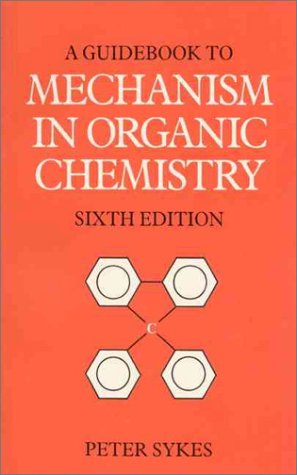This is for all those bees that would like to know how reactions occur, what makes them possible and what prevents them. Therefore, from now on, before you speculate on reaction mechanism or post questions about it you can check this book and you might find the answer you are looking for (even without going to the library, but please go there anyway as it doesn’t hurts

). This book should be a “must read” for every student of organic chemistry.
This non OCR-ed version is 5MB big (and I’m sure it’s worth the server space

).

Guidebook to Mechanism in Organic Chemistry
(6th Edition)
Peter Sykes (1986)
Essex: Longman Scientific & Technical
416 pages

Well, this is one of those anthem reviews on the back cover, but since I fully agree with it...
'Sykes' remains the bible ofmechanistic organic chemistryfor thousands of undergraduates, and there is certainly no English language publication of which I am aware which comes even close to challenging it in terms of clarity and coverage;...
will undoubtedly remain the recommended text on this subject
Contents
1. Structure, Reactivity, and Mechanism
2. Energetics, Kinetics, and the Investigation of Mechanism
3. The Strengths of Acids and Bases
4. Nucleophilic Substitution at a Saturated Carbon Atom
5. Carbocations, Electron-Deficient N and O Atoms and their Reactions
6. Electrophilic and Nucleophilic Substitutionin Aromatic Systems
7. Electrophilic and Nucleophilic Addition in C=C
8. Nucleophilic Addition to C=O
9. Elimination Reactions
10. Carbanions and Their Reactions
11. Radicals and their Reactions
12. Symmetry Controlled Reactions
13. Linear Free Energy Relationships